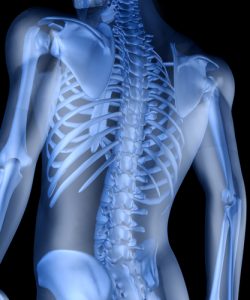 Researchers at Baylor College of Medicine have revealed a new mechanism that will contribute to adult bone maintenance and repair. This new development opens up the possibility for developing new therapeutic strategies for the improvement of bone healing.
Researchers at Baylor College of Medicine have revealed a new mechanism that will contribute to adult bone maintenance and repair. This new development opens up the possibility for developing new therapeutic strategies for the improvement of bone healing.
Bone repair in adults relies on the activation of bone stem cells. These cells remain poorly characterized. Periosteal stem cells have been the least understood. They comprise heterogeneous population of cells which can contribute to bone shaping, thickness and fracture repair. However, scientists have not been able to distinguish between the different subtypes of bone stem cells so they can study how the different functions are regulated.
In the new study, the researchers have developed a method which identifies different sub populations of periosteal stem cells, defines their particular function to repair fractures in bones in live mouse models, and also identifies specific factors that regular their migration and proliferation under physiological situations.
The team discovered specific markers in mouse models for periosteal stem cells. These markers identified a distinct subset of stem cells which contribute to life long bone regeneration in adults. They also discovered periosteal stem cells will respond to mechanical injury through engaging in healing of the bone. They are vital to bone fracture healing in adult mice and their contribution to regeneration of the bone is higher than the stem cells in the bone marrow.
They also discovered periosteal stem cells respond to inflammatory molecules known as chemokines. These molecules are typically produced during injury of bone. They respond to chemokine CCL5.
Periosteal stem cells contain receptors, molecules on their cell surface, that will bind to CCL5. This sends a signal to the cells telling them to migrate toward the injured bone and begin repairing it. By deleting the CCL5 gene in mice, marked defects in bone repair occurred and delayed the healing process. When CCL5 was supplied t the CCL5 deficient mice, bone healing accelerated.
The team’s findings suggest possible therapeutic applications. For example, in people who suffer from osteoporosis or diabetes in which bone healing can be slow and can lead to a variety of complications which can result in limited mobility, accelerated bone healing could reduce hospital stays and improve their prognosis.
The findings contribute to a much better understanding of the mechanisms behind bone healing. This is one of the first studies to indicate that bone stem cells are heterogeneous and that a variety of subtypes have unique properties which are regulated by specific mechanisms. The team has identified markers which enabled them to identify the bone stem cell subtypes and have identified what each subtype contributes to the health of bone.
To view the original scientific study click below
Identification of Functionally Distinct Mx1 SMA Periosteal Skeletal Stem Cells





